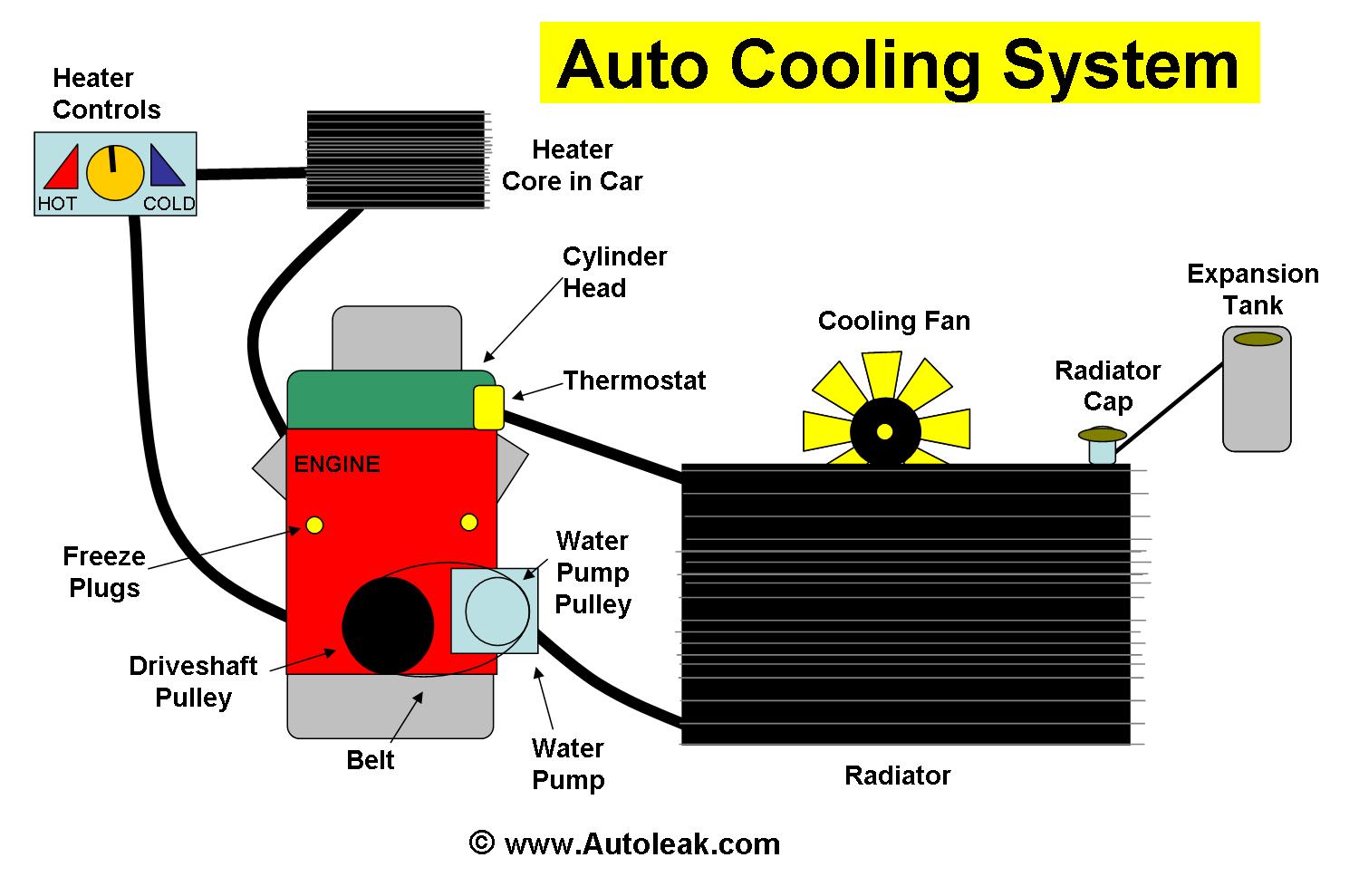Cooling System for Cars

Cooling System / Antifreeze Coolant
Image above shows how the Cooling System works with the engine to keep the engine cool. If the Cooling System Leaks then Antifreeze Coolant will come out of one of the locations in the picture.
Most cars use a pressurized antifreeze coolant liquid cooling system to keep the engine at the best operating temperature. This antifreeze coolant is usually a florescent green or orange in color. Antifreeze coolant freezes at lower temperature than just plain water. The antifreeze coolant liquid also contains chemicals that prevent damage through corrosion to the parts of the engine and cooling system the liquid flows through.
Antifreeze coolant gets pressurized by the heat of a running engine. Heat from the engine is transferred to the coolant via various pipes and holes in the engine which the antifreeze coolant runs through. A water pump is what moves the coolant through the engine. Water pump also moves the coolant through the heater core and radiator. Heater core provides heat to car passengers on a cold day. Heat is provided by the warm coolant running through the heater core.
Radiator is used to transfer heat from the antifreeze coolant into the surrounding air. Since the air is cooler than the antifreeze coolant liquid in the radiator, the heat from the liquid will transfer to the air. This reduces the temperature of the antifreeze coolant. A Cooling Fan located beside the radiator helps to cool the antifreeze coolant in the radiator. Cooling fan or fans suck or blow air across the radiator. By doing this, more colder air is passed across the radiator.
Water pump, pumps the cooler antifreeze coolant back into the engine which cools the engine down.
A Thermostat makes sure that not too much cooled antifreeze coolant is pumped back into the engine. If too much cooled antifreeze coolant was pumped back into the engine, then the engine would get too cool. A cool engine does not run efficiently as an engine at the right temperature. Cool engine would use more fuel.
On hot days the antifreeze coolant in the cooling system can be under a lot of pressure. If the cooling system built up too much pressure it would explode. This would destroy the cooling system. To relieve pressure, radiators have a cap with a pressure rating. Radiator caps consist of a spring and rubber seal. The spring pushes the rubber seal against the a hole in the top of the radiator. As the seal is against the radiator hole, no antifreeze coolant can escape. When the pressure rating is reached the coolant is able to lift up the rubber seal. Pressure of the antifreeze coolant has become stronger than the spring holding down the seal. It is like the radiator cap no longer seals the radiator.
In the old days, the antifreeze coolant that escaped the radiator was allowed to leak onto the road. This was bad for the environment and also meant during the summer the radiator would have to be topped up as coolant escaped. Now the pressurized coolant that escapes is captured in an expansion tank. When the engine cools down, any coolant that escaped to the expansion tank is sucked back into the radiator. This is better for the environment and keeps the coolant level correct.
Question or Solution not mentioned?
Use
Auto Repair Forum to ask or answer questions about car and auto repair.
Advertise your Auto/Car/Truck Repair Parts or Auto/Car/Truck Repair Business on this site.
Contact us at Advertising@AutoLeak.com
We have affordable advert solutions!
Act now to potentially reach thousands of unique people a month who are trying to repair/maintain their vehicles.